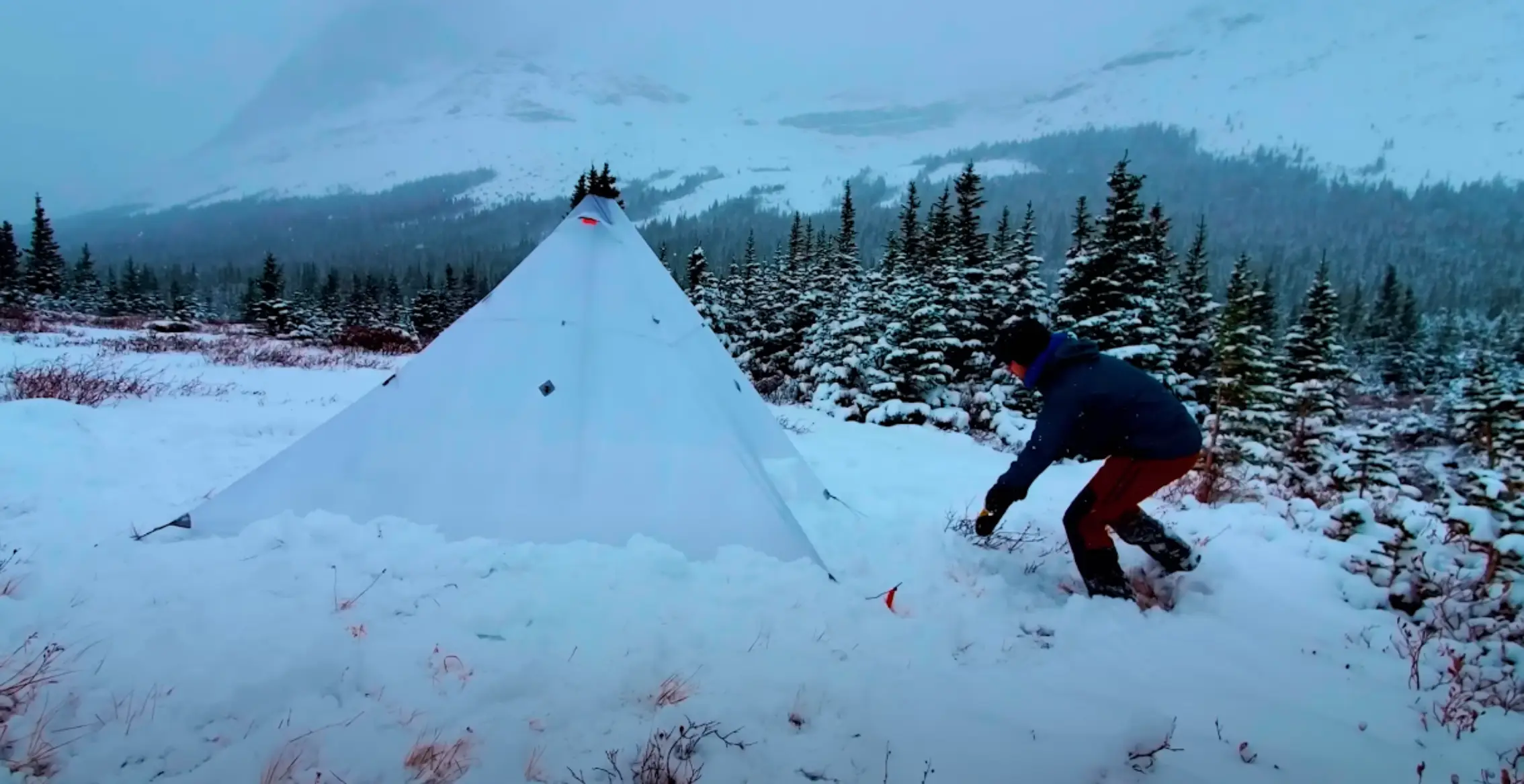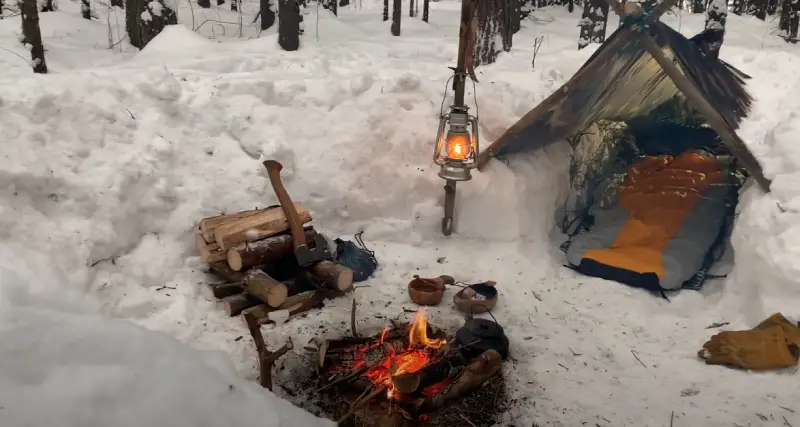How To Sleep In a Tent In Winter: 19 Tips & Tricks [Real]
Sleeping in a tent during winter was an incredibly exhilarating experience for me. The crisp air, the rustling of leaves, and the beautiful views of snow-covered landscapes made it an adventure.
Spending the night in a tent without proper setup led to several harmful effects that left me feeling anything but rested. I didn’t let the cold and snow dampen my camping experience or affect my sleep quality.
The first layer I wore was for moisture-wicking, followed by a warm and windproof layer. I also packed an extra base layer to change into, as I wanted to avoid sleeping in sweaty clothes.
Another thing I considered was to use two sleeping pads instead of one, as it provided an extra layer of insulation between me and the cold ground. Also, layering my sleeping bag with a quilt or blanket kept me warm and cozy throughout the night.
This blog post will share how to sleep in a tent in winter, my experience, and the best way to sleep in a tent in winter tips & tricks.
How To Sleep In a Tent In Winter: 19 Tips & Tricks
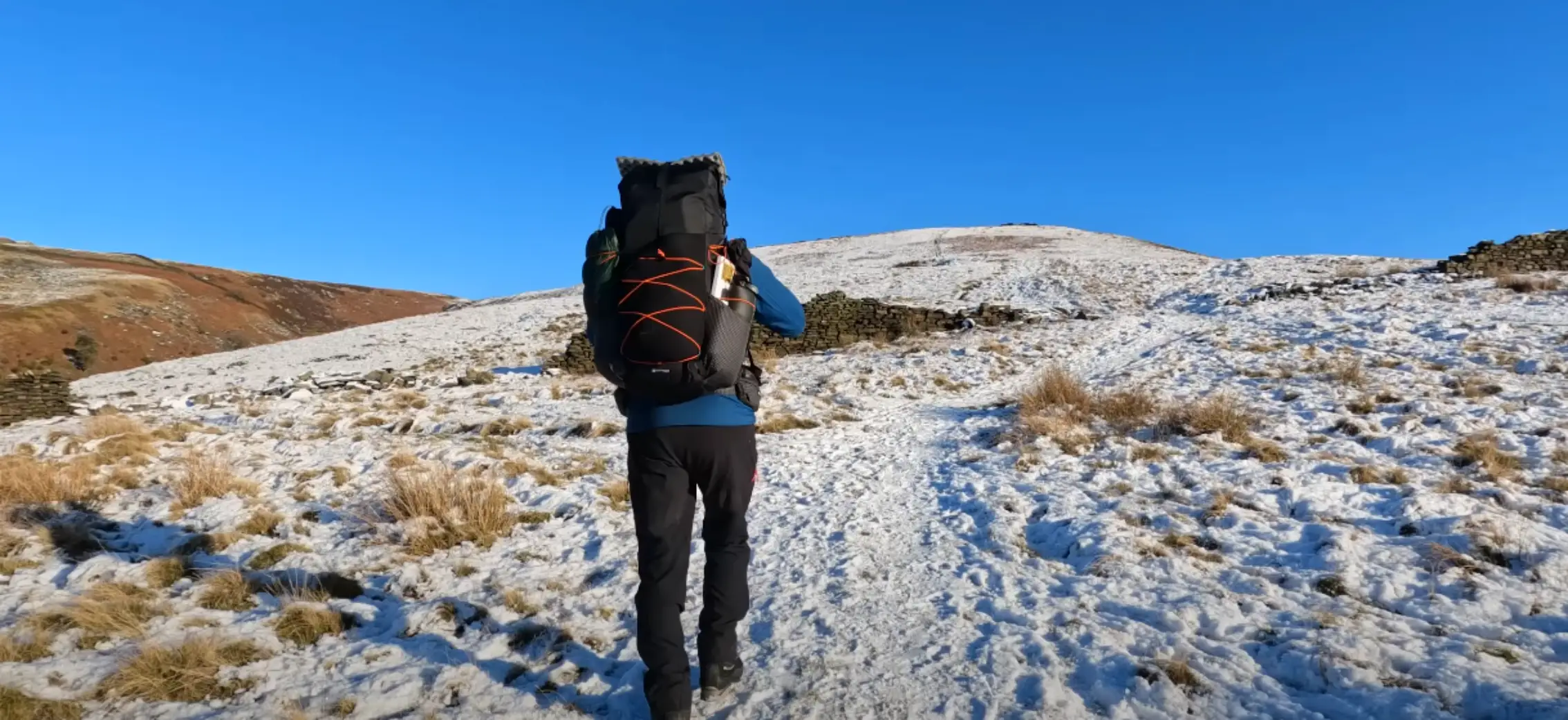
Camping can be a unique experience during winter. But don’t let the cold weather stop you from enjoying the great outdoors. Sleeping in a tent with pets during winter can be a comfortable and magnificent experience with some preparation and the right gear.
Avoided Using Inflatable Beds
When I slept in a tent during winter, it was best to avoid using inflatable beds. The cold ground could cause the air in the bed to cool down quickly, making it uncomfortable to sleep on. Instead, I opted for foam or air-insulated sleeping pads. These pads provided better insulation from the cold ground and kept me warm throughout the night.
Check Weather and Hazards
I always checked the weather forecast before heading out to avoid unpleasant surprises. Winter weather was notoriously unpredictable and could change in an instant. I ensured to stay aware of approaching weather systems or hazardous conditions such as snowstorms or freezing rain. The last thing I wanted was to be surprised by extreme weather.
Secure Your Campsite and Flatten Your Sleeping Surface
I chose a reasonably dry location, flat and protected from the elements. Flat ground was essential for a good night’s sleep and to prevent any discomfort. I cleared away any snow to expose the dirt and flattened the site with my tools or boots. A well-prepared site provided a comfortable and secure resting place during even the coldest winter nights.
Insulation
Insulation was vital to ensuring a comfortable experience. Proper insulation protected me from both the cold and dampness. My cat’s sleeping area was adequately insulated to prevent them from getting out. A warm cat bed, blankets, and sleeping bags helped keep them warm and cozy.
When building my tent, I considered the walls’ insulation, floor, and ceiling. I looked for the best thermal performance on winter living insulation materials to reduce as much heat loss as possible. Proper insulation was crucial in preventing body heat from escaping and ensuring a warm and comfortable sleep.
Cold-Weather Camping Gear
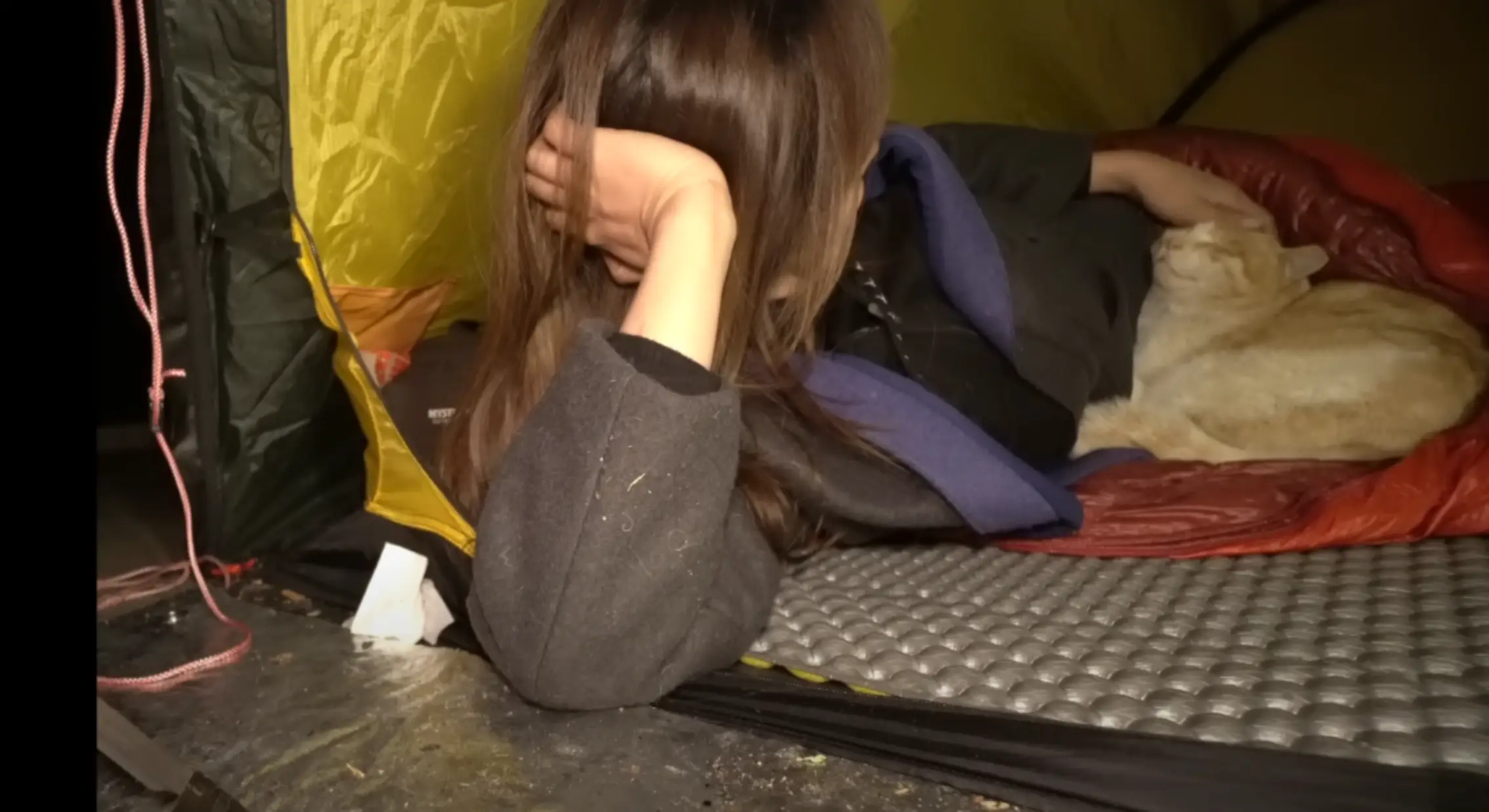
The right gear is critical for winter sleep. I invested in high-quality equipment, starting with a closed-cell foam sleeping pad, a sleeping bag with an appropriate lower-limit temperature rating, synthetic or wool base layers, socks, gloves, and a technical cold-weather hat. I dressed in layers to maintain body heat while still allowing for ventilation to avoid overheating.
Use a Propane Heater or An Electric Space Heater
I considered using a propane heater to keep myself warm during freezing nights. These heaters could heat the interior of my tent for a more comfortable experience. I also used a heated mattress pad or electric blanket to keep warm while sleeping.
Use Thermal Bags for Sleeping
Thermal bags, specifically those designed for extreme cold weather, kept me warm. My head and feet were the most crucial body parts I needed to prevent the cold. I wore thermal hats and thick socks or even invested in battery-operated heated socks to keep me warm and dry throughout the night. Hand and foot warmers were helpful for added warmth.
Know Your Pet’s Tolerance of Cold
I knew cat breeds had different cold tolerances and needed to understand how hard my pet could handle. Larger species, such as Husky, Malamute, and German Shepherds, were more adaptable to colder temperatures than smaller breeds. To ensure a good night’s sleep, I researched my cat’s breed to determine their tolerance for cold temperatures.
Protect Your Pet from Hypothermia and Frostbite
Hypothermia and frostbite are common in cats during winter. Keeping my cats warm and dry was crucial to avoiding these dangerous conditions to ensure sound sleep. Symptoms of hypothermia included shivering, lethargy, and stiffness. In the event my pet showed any signs of hypothermia, I sought immediate veterinary care.
Provide Warm Food and Water
Providing my cat with warm food and water ensures sound sleep during cold weather. Cold food and water could lower my pet’s body temperature, making them more susceptible to hypothermia. I kept water close to the fire to prevent it from freezing and replaced it with warm water throughout the day.
Dressed in layers
Layering was essential to staying warm in cold weather. I started with a moisture-wicking base layer, followed by insulating layers, and finished with a waterproof and windproof outer layer. I could easily adjust my body temperature by wearing multiple layers according to the weather.
Wore Dry Clothing
Moisture was my enemy in winter camping. Moisture could quickly cool my body and make me feel colder than the actual temperature. Therefore, I needed to keep my clothing and gear dry. I brought extra layers of clothing and waterproof overshoes to keep my feet dry.
Avoided Overdressing
Although it was essential to stay warm, I avoided overdressing as it could cause me to sweat, and sweating in cold weather could lead to hypothermia. A good rule of thumb was to dress in layers and remove a layer before I started sweating.
Used a Sleeping Pad
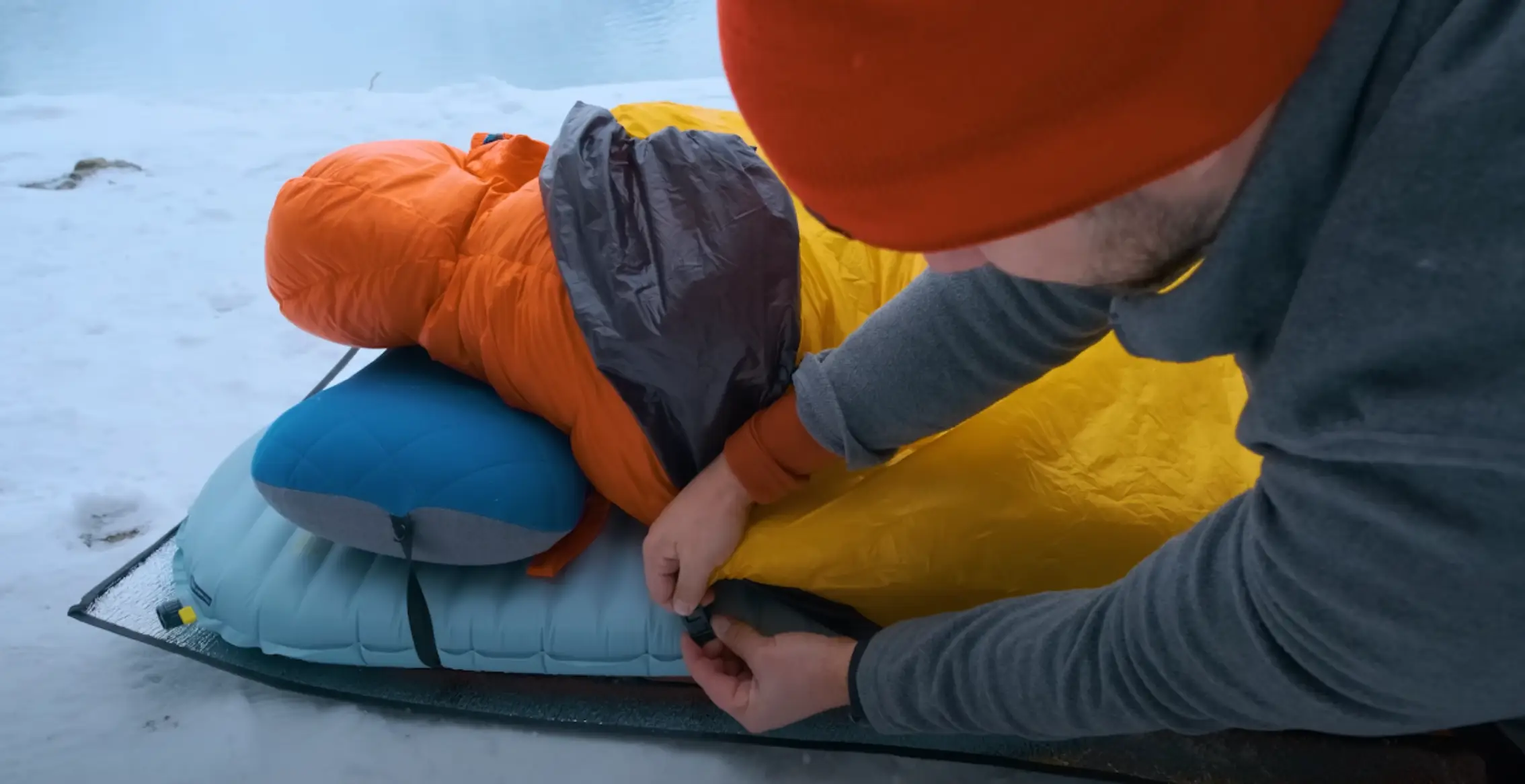
Sleeping on the cold ground quickly stripped away my body’s warmth. Therefore, it was crucial to have a well-insulated sleeping pad. I looked for a pad with an R-value of 4 or higher, recommended for cold-weather camping.
Wore a Hat And Gloves Before Bed
My head and hands were vulnerable to heat loss, so wearing a hat and gloves before entering my sleeping bag was a good idea. Also, I ensured my head and neck were well-covered to prevent heat loss.
Got Out of Sweaty Clothes and Then Slept
After hiking or engaging in outdoor activities, I constantly changed into dry clothes before bed. Sleeping in damp attire can cause hypothermia and considerable discomfort.
Balaclava to Bed
A balaclava is a face mask that covers your head, face, and neck, providing warmth in cold weather. It prevents heat loss and shields your face from icy winds, making it an essential accessory for chilly days. Stay cozy and protected with a balaclava.
Vented My Tent
It was essential to keep my tent ventilated to avoid condensation. Leaving vents open prevented moisture build-up and kept my sleeping space dry.
Warm Foods and Drinks
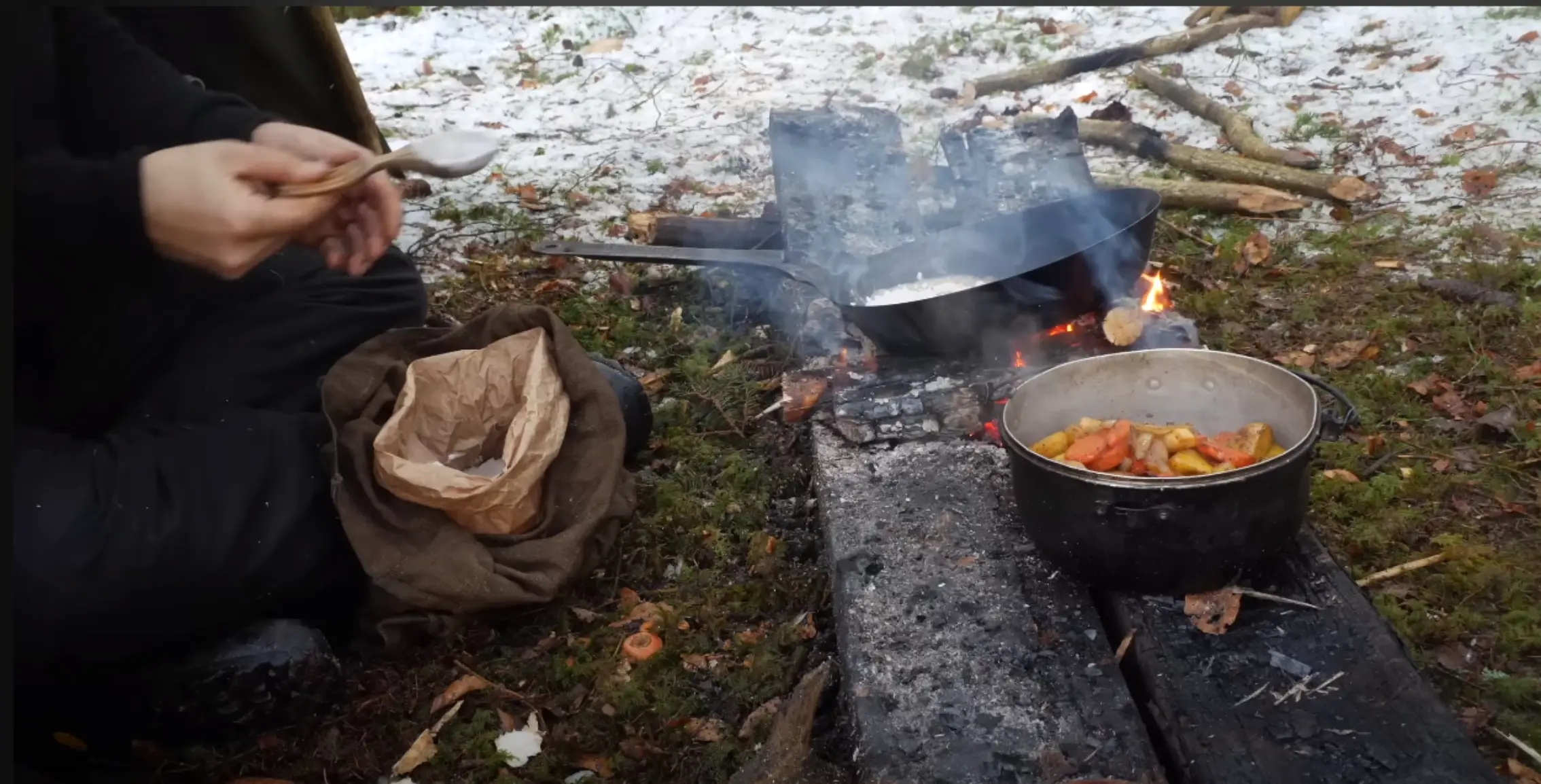
Warm foods and drinks helped me stay warm from the inside out. Soups, stews, and hot cocoa were great options for a winter camping trip. I brought a portable stove and utensils to cook my food.
Conclusion
Sleeping in a tent with my pets during winter was an incredible experience when done correctly. With the proper preparation and gear, I could sleep comfortably and wake energized and ready to explore my surroundings. I remembered to prioritize insulation and check the weather before departing.
I secured my campsite and brought thermal bags and heated accessories for warmth. I knew my pets’ cold tolerance and protected them from hypothermia and frostbite. A little preparation went a long way toward a successful winter camping experience. Happy adventures turned into cherished memories.
FAQs
Is It Safe To Tent In a Winter Camp With a Baby?
Yes, it can be safe, but it requires careful planning. Ensure the baby is well-insulated, monitor the temperature, and always prioritize the baby’s comfort and safety.
